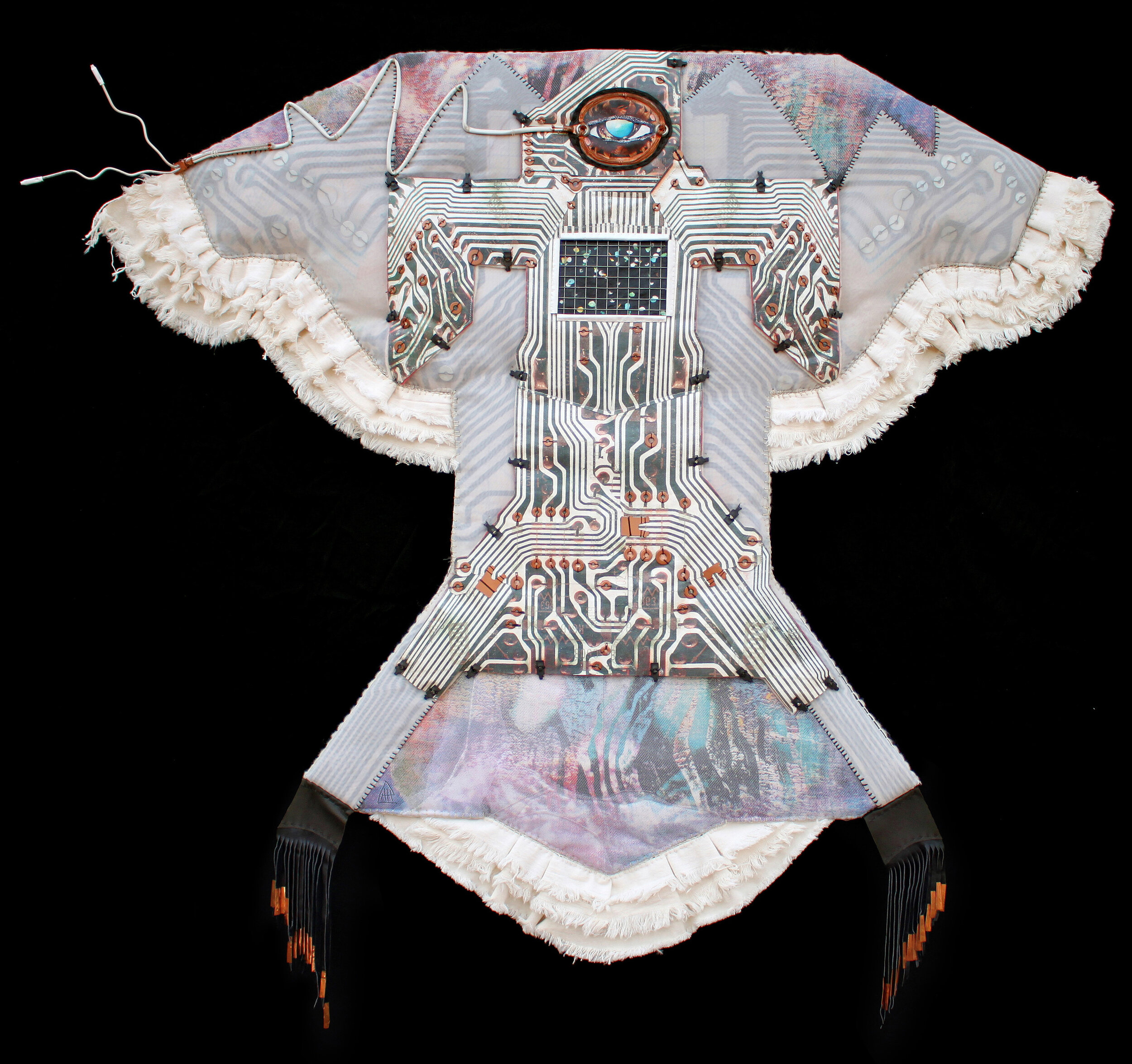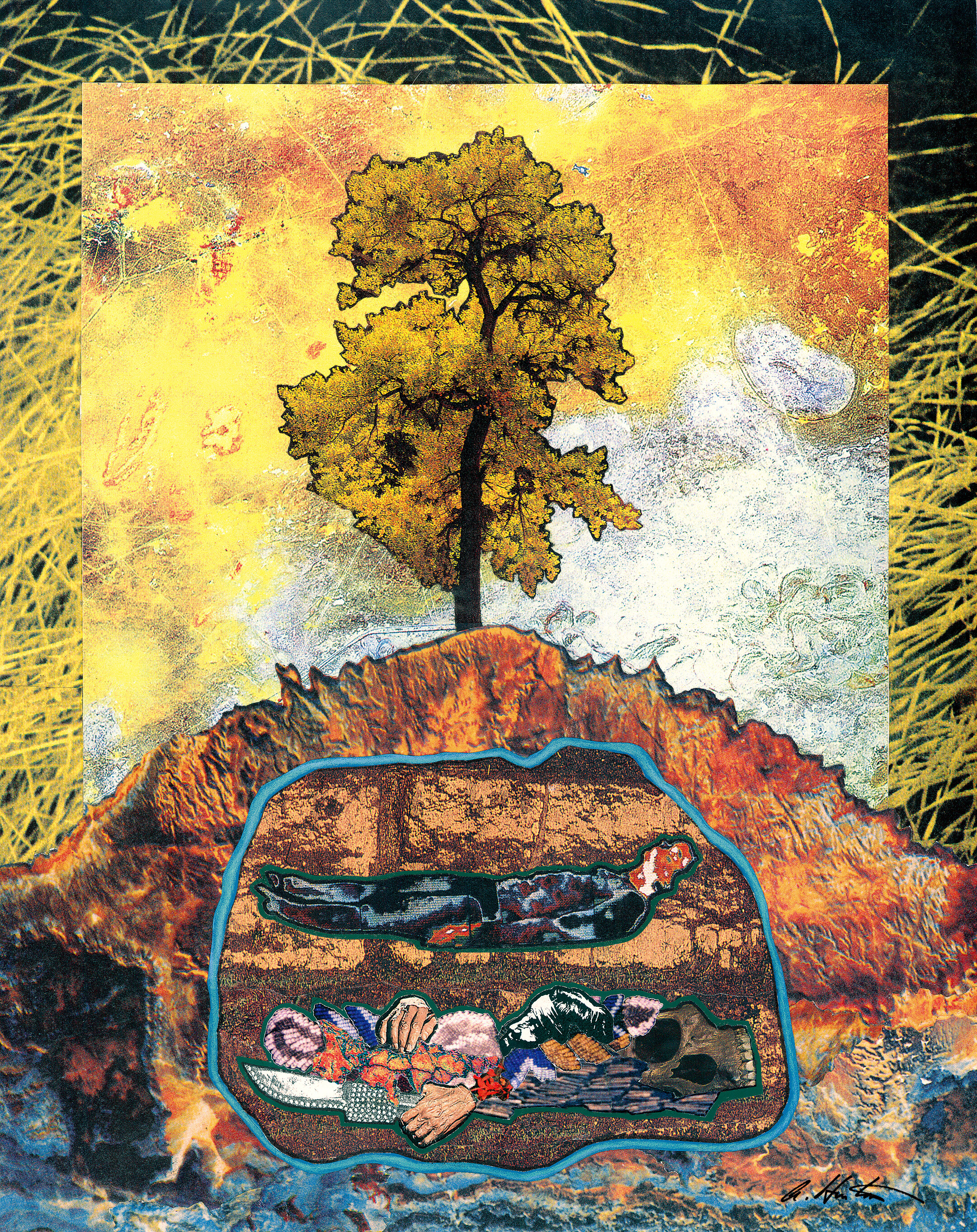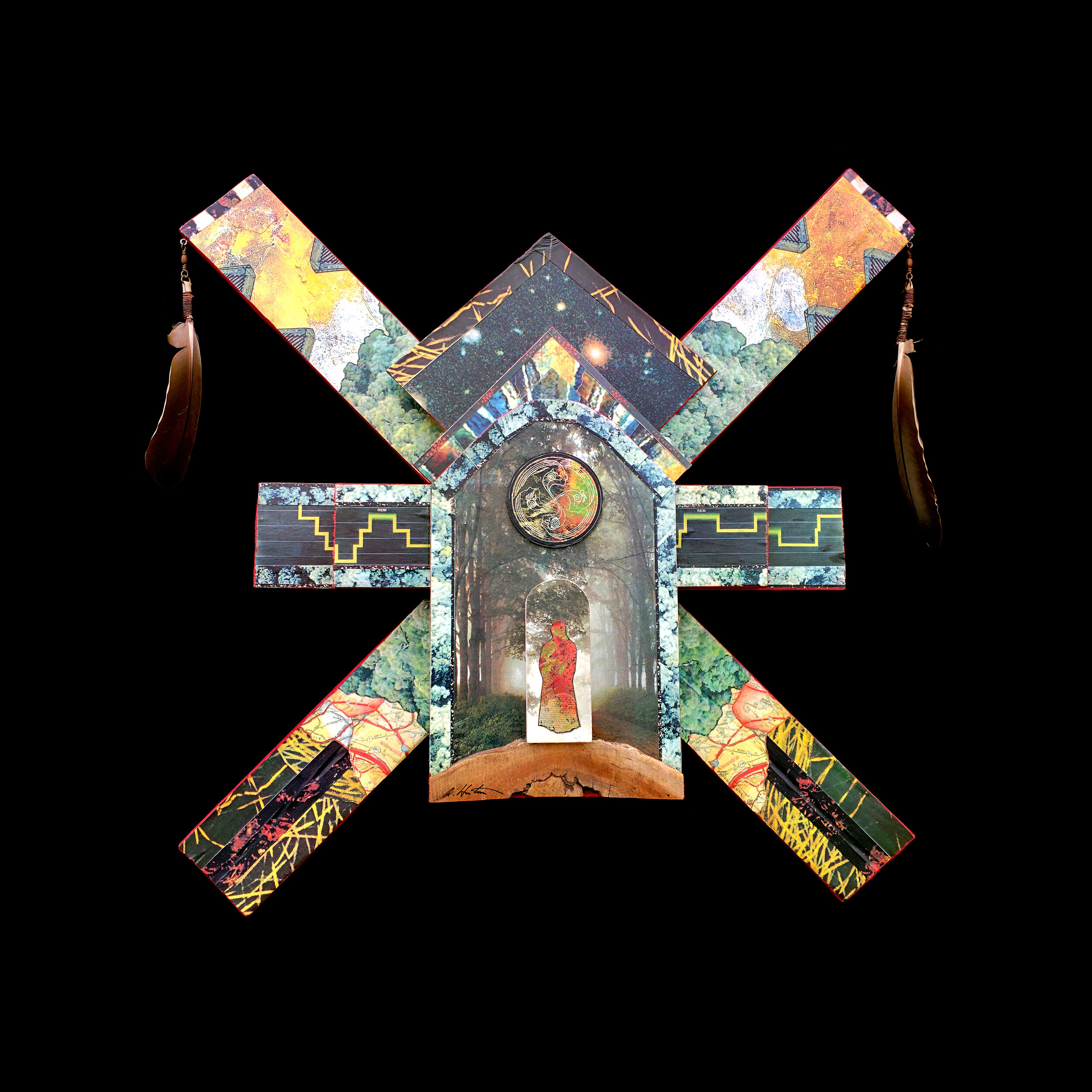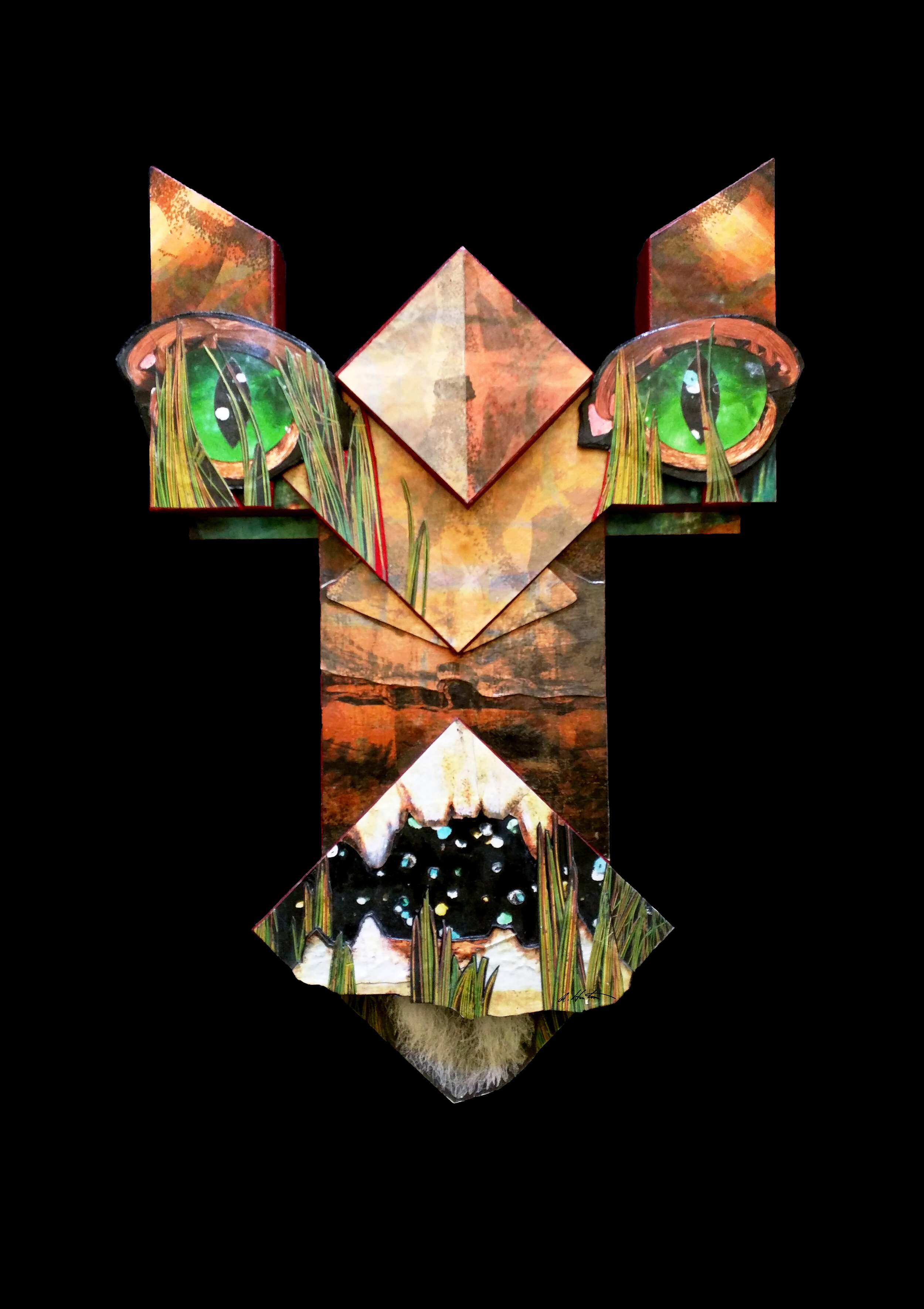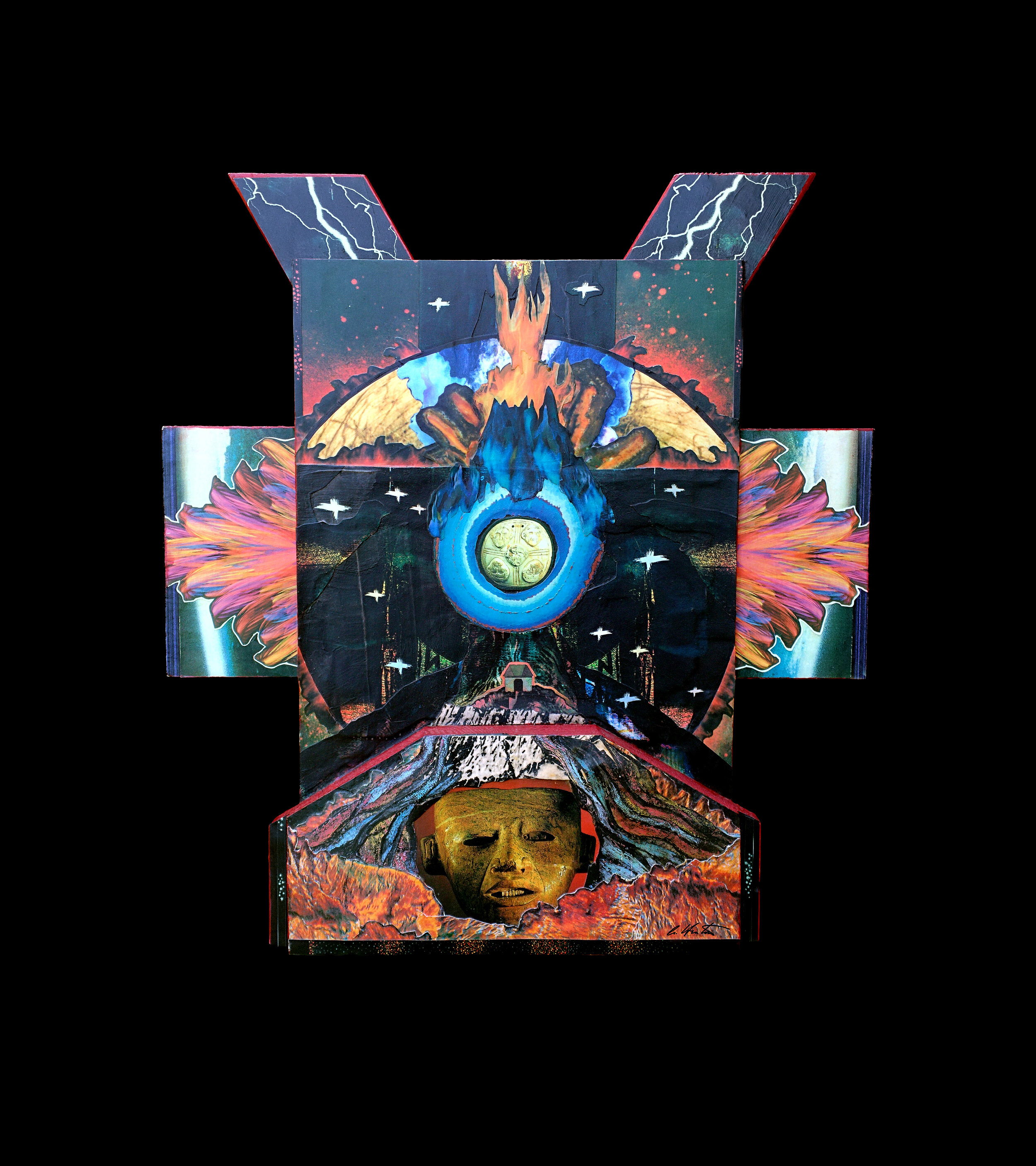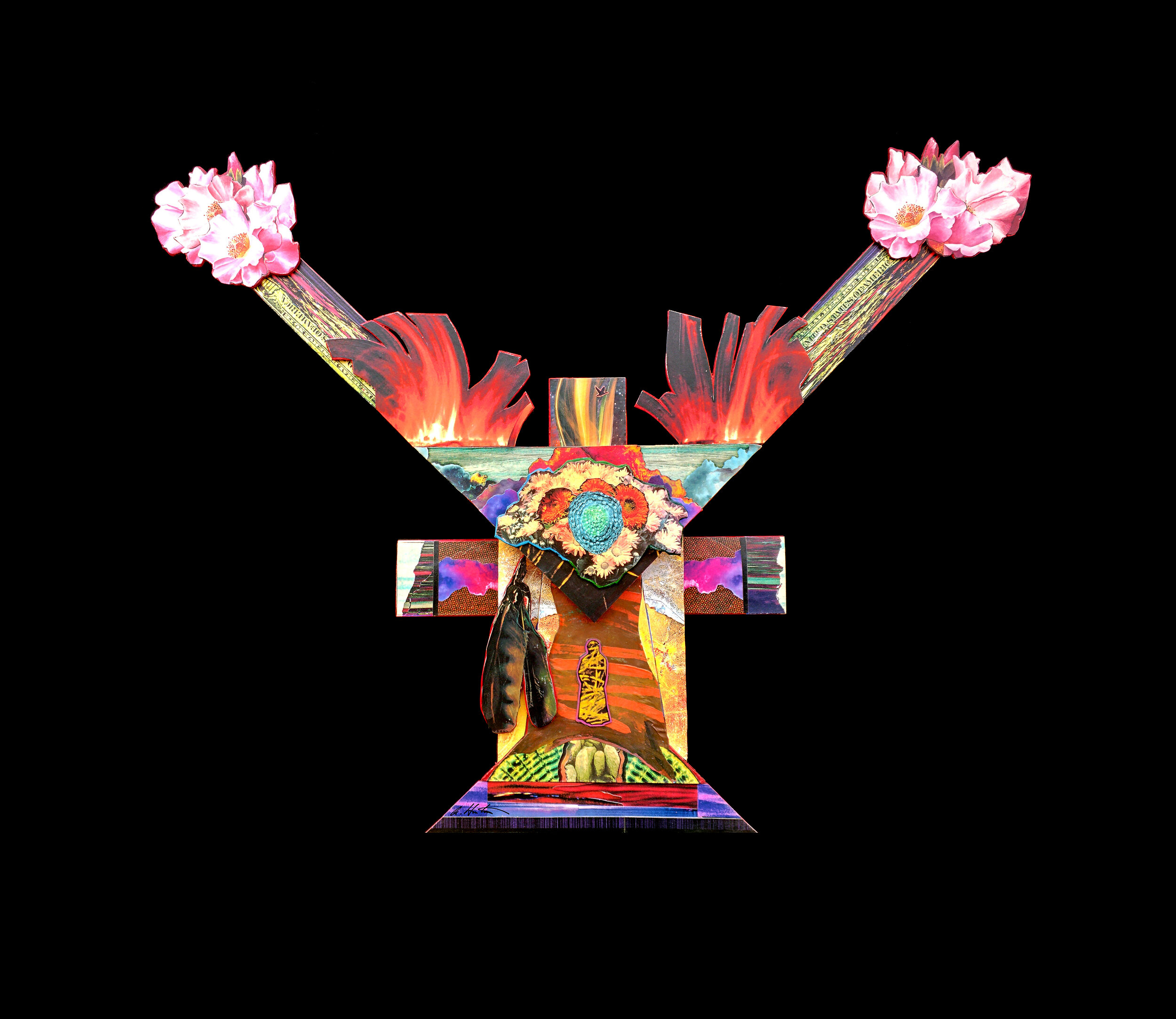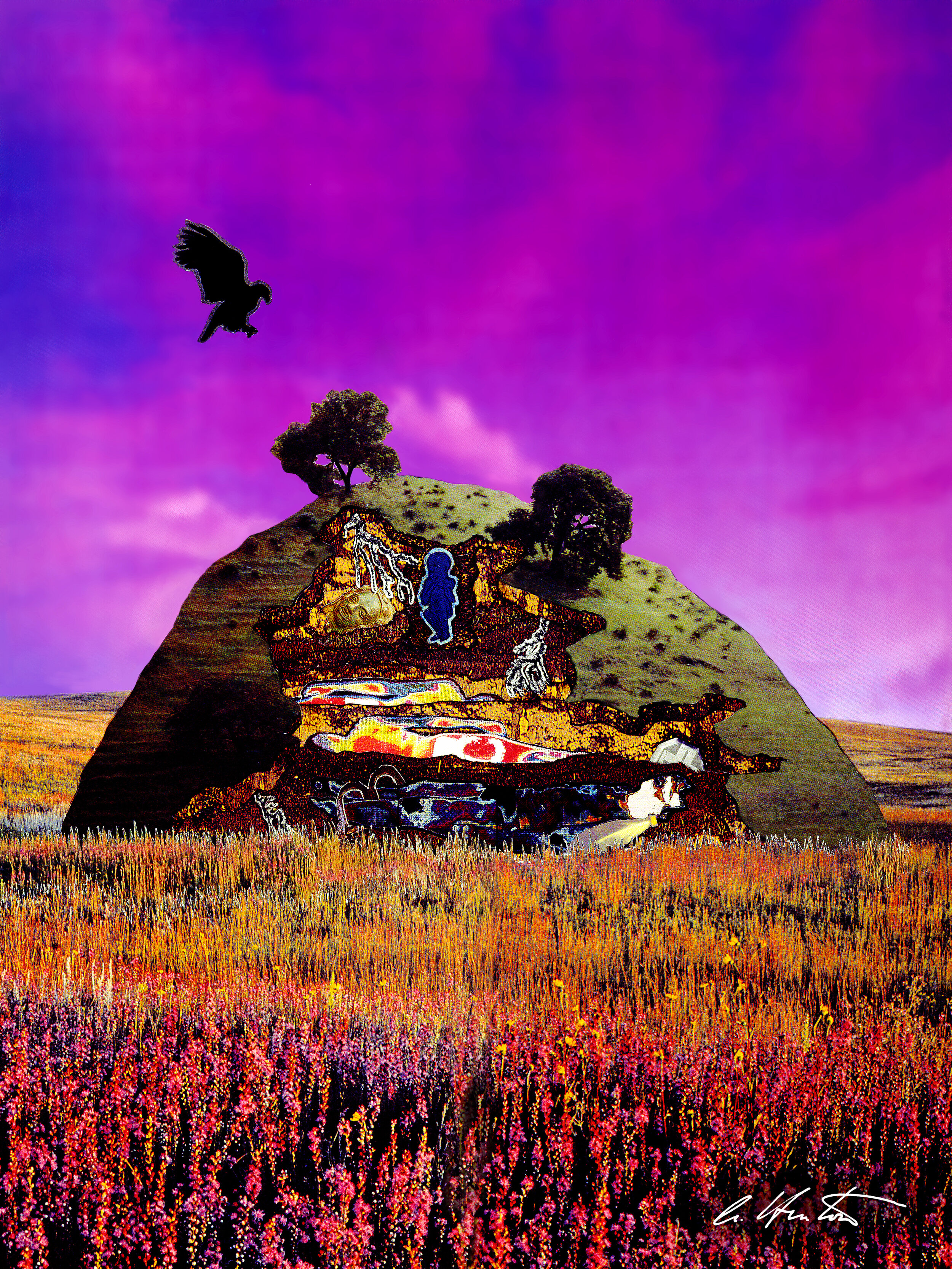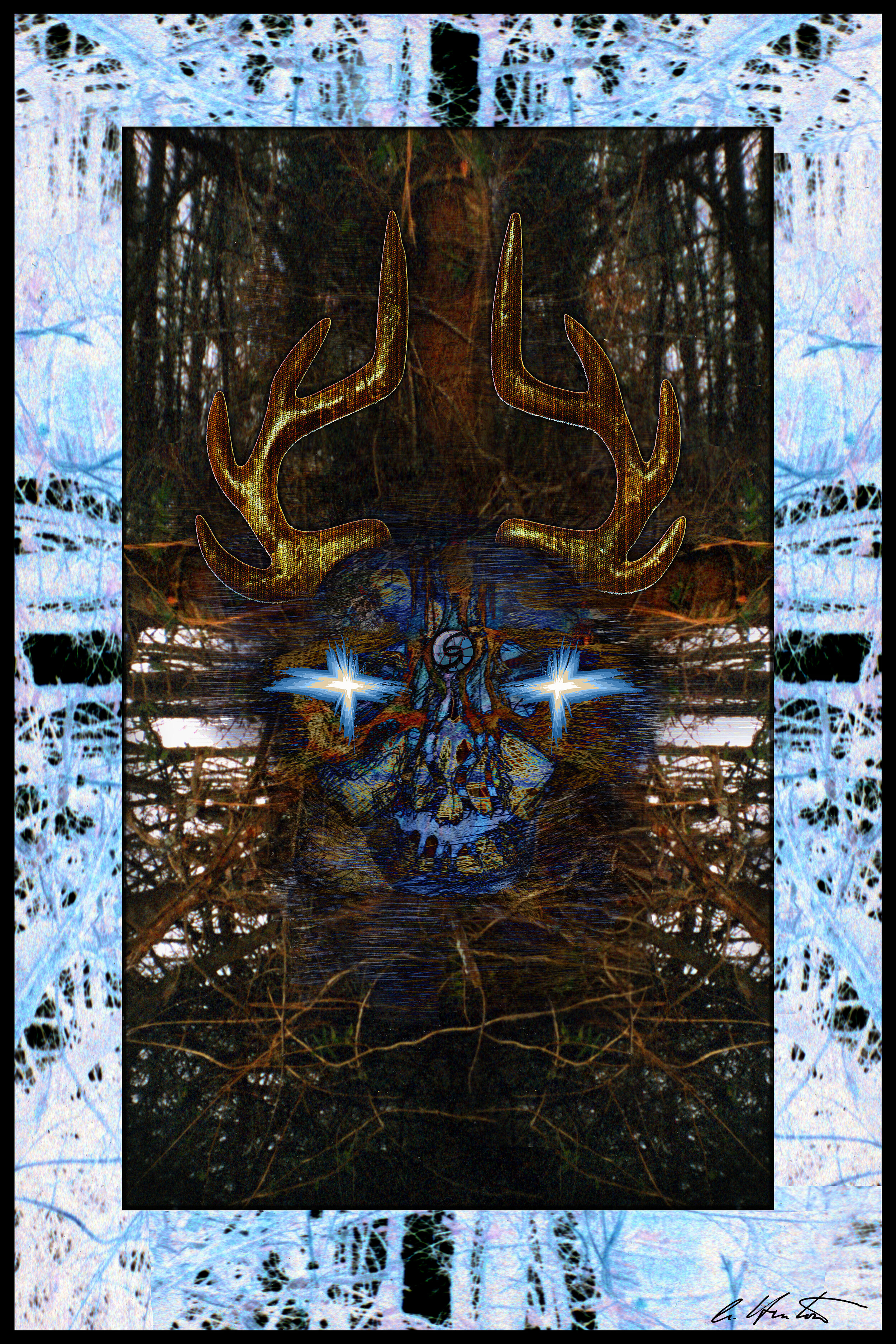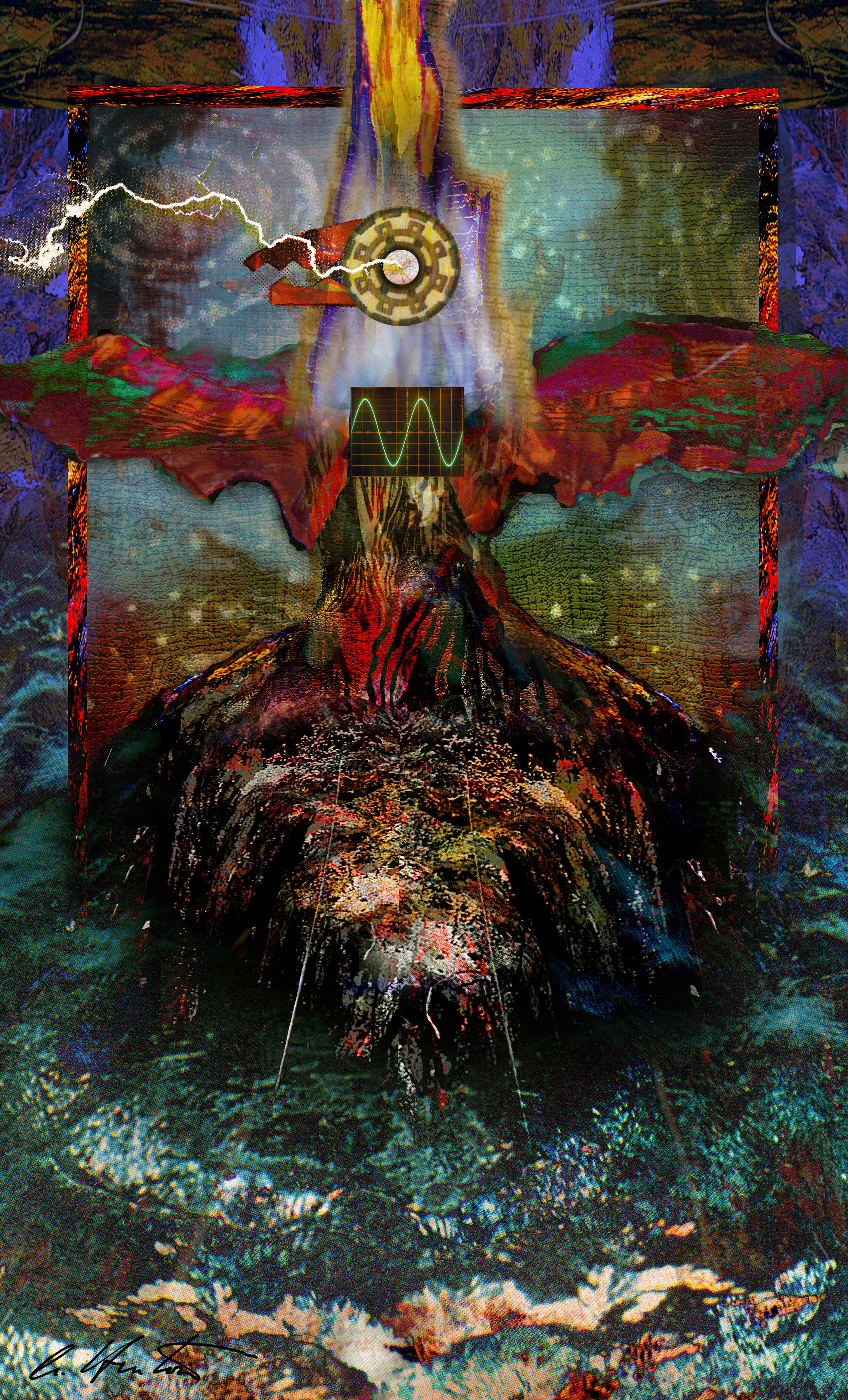
ALYSSA HINTON
“My mixed identity is a blueprint for the hybrid approach I use, where I can mix and match at will. The work encompasses a wide variety of mixed media formats: photo-collage, digital composite (combining hand rendered art and digital tools), assemblage, patchwork quilting and fiber appliqué. … It is the summation of a 20-year journey of inquiry and a deep excavation of information …”
Using vibrant colors that awaken the soul, mixed media artist, Alyssa Hinton, illustrates a theme of cultural reawakening and regeneration through her unique southeastern Native American imagery. Her work is a provocative portrayal of the folklore and history surrounding her roots, utilizing tradition and vision with a contemporary edge.
Internationally trained, and of mixed heritage, Alyssa draws on an eclectic background. This has allowed her to create art with universal appeal, investigating on many levels and challenging conventional parameters of “expected” Indian imagery. Her recent themes reflect an attempt to untangle a complicated web of events pertaining to the displacement of her Tuscarora (Eastern North Carolina) and Osage (Missouri/Kansas) ancestors.
These narrative earth-conscious works speak to the preservation of both the ecology and indigenous spiritual traditions. They bring to light aspects of a distinct but under-represented southeastern Native experience, one whose basic worldview is rooted in ancient Mississippian mound culture. On a more personal note, by uncovering what has been denied or seemingly lost, the work also chronicles the artist’s “inner restoration”.
Current and recent artwork by mixed media artist Alyssa Hinton explores her indigenous heritage especially her Tuscaroran ancestry. Her multiracial background reflects the hybrid quality of her art-making approaches include installation, sculpture, collage, assemblage, patchwork quilting, fiber appliqué, painting, drawing, block prints, photo-to-collage, and digital composite. Exhibition and book launch is at C.X. Silver Gallery on view daily by appointment (call in advance to arrange a visit 802-257-7898). Three years in the making, her Earth Altar was inspired by Native American astronomy, cosmology and earth spirituality and and by traditional hide garments. Symbolizing the revival of Indigenous culture and the unity and interdependence between humans and the universe, the five pieces of the Altar are an octagonal medicine wheel encircled by four free-hanging ‘Power Dresses,’ wearable medicine wheels, designed to show the horizon line between the earth and sky.
The Awakening series reflects her connection to, and reverence for, the natural environment and the mysteries of the cosmos, each artwork a ‘visual soul,’ and ‘a window through which we can look inward and outward at the same time.’ The Ancestral Spaceship mixed media assemblage series develop imagery relating to the creation stories and ceremonial/seasonal cycles of her Indigenous ancestors with a message of connectedness to the earth and being part of the universal dialogue of environmental responsibility. Alyssa attended The Putney School, which her grandmother founded. Her great grandfather mathematician George Boole of Ireland from whom we now have Boolean Algebra. Her mother’s side are of African and Native American ancestry and she now lives on land in North Carolina on which some of those ancestors were once slaves and before that linked to the Tuscaroran civilization dating back more than 600 years.
“The multi-layered collage epitomizes arguments increasingly put forward by Native writers, artists, intellectuals, and nations: like other Indigenous writing systems, they assert, earthworks and their encoded knowledge have been ‘asleep’ rather than ‘dead.’ Dormant but alive, they have waited to be awakened by descendants of their makers finally free to re-approach and even to remake them, finally freed of the psychological fetters of an internalized colonialism that has undervalued Indigenous technologies and ways of knowing. Earthworks have been waiting, they assert, for old scripts to be reactivated, for new scripts to be written and performed. A time of waiting appears near an end, near the beginning of a new cycle. That time of new beginning is now.”

